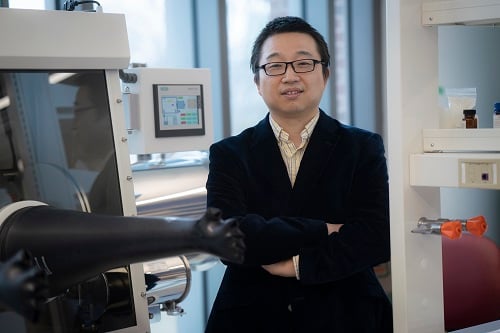
Purdue Team Patents Atomically Thin Material
WEST LAFAYETTE, Ind., Sept. 9, 2020 — A team from Purdue University has received a patent for a 2D nanomaterial that has potential for use in nanoelectronics, quantum devices, and infrared technology used in national defense tools and biochemical sensors.
The material is derived from the rare element tellurium, which has a thin, durable structure with unique properties.

Wenzhuo Wu, Purdue University's Ravi and Eleanor Talwar Rising Star Assistant Professor of Industrial Engineering, is working to take a new two-dimensional nanomaterial to market. Courtesy of Wenzhuo Wu, Purdue University.
“Our technology produces atomically thin 3D tellurium, which can be used for high-performance devices. The amount needed for each device is very little, and the added values can be enormous,” said Wenzhuo Wu, assistant professor of industrial engineering at Purdue.
Tellurium is not abundant in Earth’s crust. Only a small amount is needed, however, Wu said, to be synthesized through their solution method. The nanomaterial, tellurene, is air-stable and can grow independently (without the help of another substance).
“Recent advances have led to new electronic and photonic device paradigms leveraging 2D materials, which have an atomically thin thickness, but their length and width are much larger than that thickness,” Wu said. “Our solution helps overcome roadblocks for known 2D materials to meet the technological needs in emerging areas such as nanoelectronics or mid-infrared integrated photonics.”
Tellurene itself has several potential applications, including high-speed electronics, wearable sensors, quantum devices, and infrared technology.
Wu said that he and his students discovered the solution accidentally while conducting laboratory experiments. Since their discovery of tellurene, Wu and his team have published more than 12 papers on the properties and device applications of tellurene for nanoelectronics, infrared sensors, photonic devices, and other technologies.
Published: September 2020